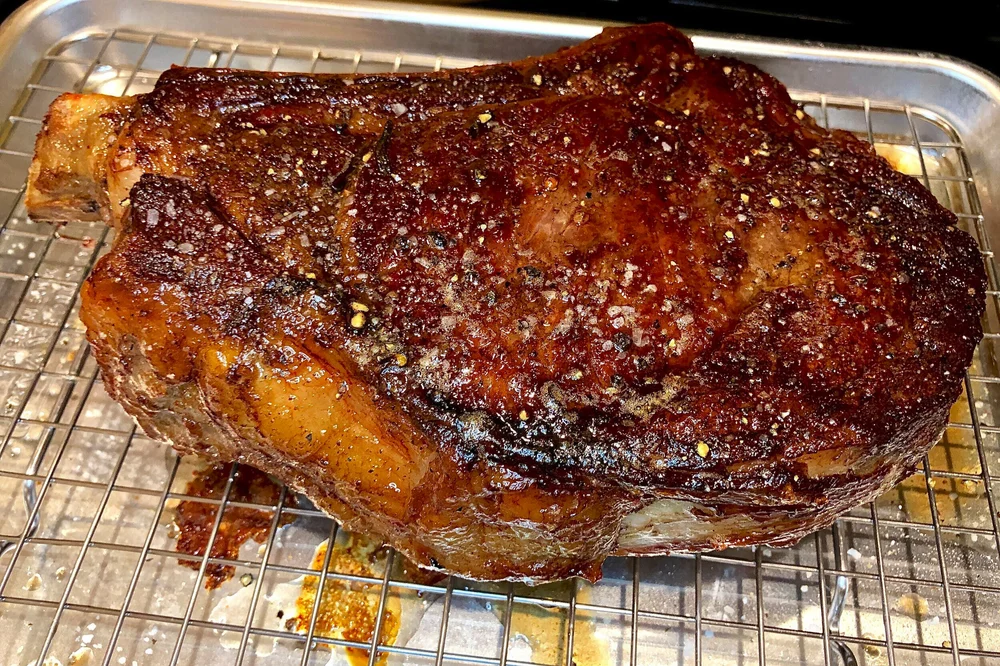
I must confess, the Hubs and I were in somewhat of a steak rut when he approached me one weekend, with a recipe in hand and a question. We have a longstanding tradition of cooking steaks on Sunday (#SundaySteaks) and he had just read about a technique called the “reverse sear” that he really wanted to try. As the primary steak maker in the house, I thought, “sure, let him challenge my methods and further reinforce how amazing my mad steak skills are,” and I relinquished my beloved cast iron skillet for the evening.
And WOW am I glad I did! The reverse-seared steak was utterly delicious, not to mention, stunningly beautiful!
We’ve been happily experimenting with the “reverse sear” method ever since and it is currently our preferred method of making steak. Unlike some other cooking methods that have gained popularity in recent years, this one is straightforward, user friendly and doesn’t require any expensive, specialized equipment - a major #petpeeve! All you need are kitchen essentials like a good cast iron skillet, meat thermometer, quarter sheet pan with a rack, and, of course, the steak itself. More on that later.
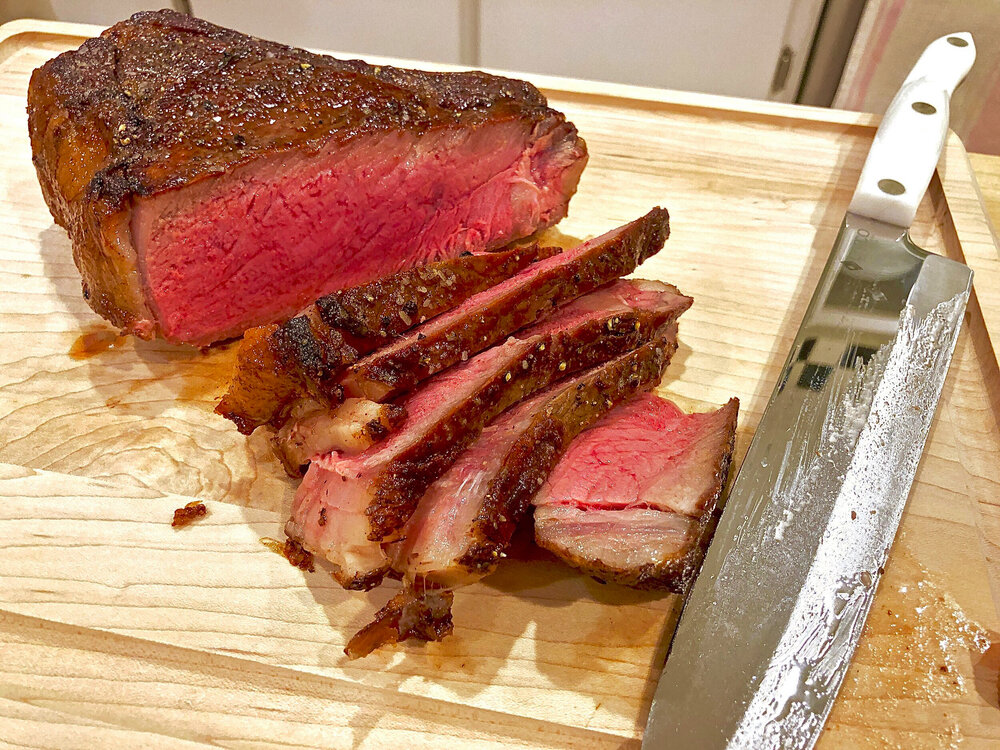
The “reverse sear” technique is exactly that, reversing the two main components of cooking a steak. Normally, a steak is first seared in a screaming hot pan on both sides before it is then finished in the oven to the desired level of doneness. The “reverse sear” on the other hand calls for the steak to first be roasted at a low temperature in the oven to the desired level of “doneness”, and then finished in the pan to form that mandatory, glorious, outer crust.
Sounds easy enough, right? That’s because it is! Here are some reasons why you should definitely try the “reverse sear”:
No expensive cooking equipment or excessive amount of time are required.
Cooking the steak at a low, slow temperature allows the steak to cook slowly and evenly.
For best results, use a thicker, bigger cut of meat which practically guarantees leftovers!
By roasting the steak BEFORE searing it, you have more control over the cooking process.
You can add your favorite herbs to the butter during the finishing, searing process which infuses the steak with incredible flavor.
As for the steak, we recently discovered Wild Fork Foods, an emporium of over 500 different types of meat ranging from chicken to alligator tail. All of their meat is flash frozen at the peak of freshness to lock in all if its amazing flavor. For the reverse sear method, it’s best to use a thicker cut of meat, and a bone-in option is even better. We love their Bone-in Black Angus Beef Florentine Steak, an impressive, 2-1/2 inch thick cut steak that’s inspired by one of our favorite Tuscan steaks of all time, Bistecca alla Fiorentina.
This Florentine classic is essentially a bone-in Porterhouse steak that is gloriously marbled, has delightfully complex flavors and a luxurious, buttery texture. Other cuts that work well with the reverse sear (and again the thicker the better), include the ribeye, NY strip, T-bone, tri-tip and filet mignon.
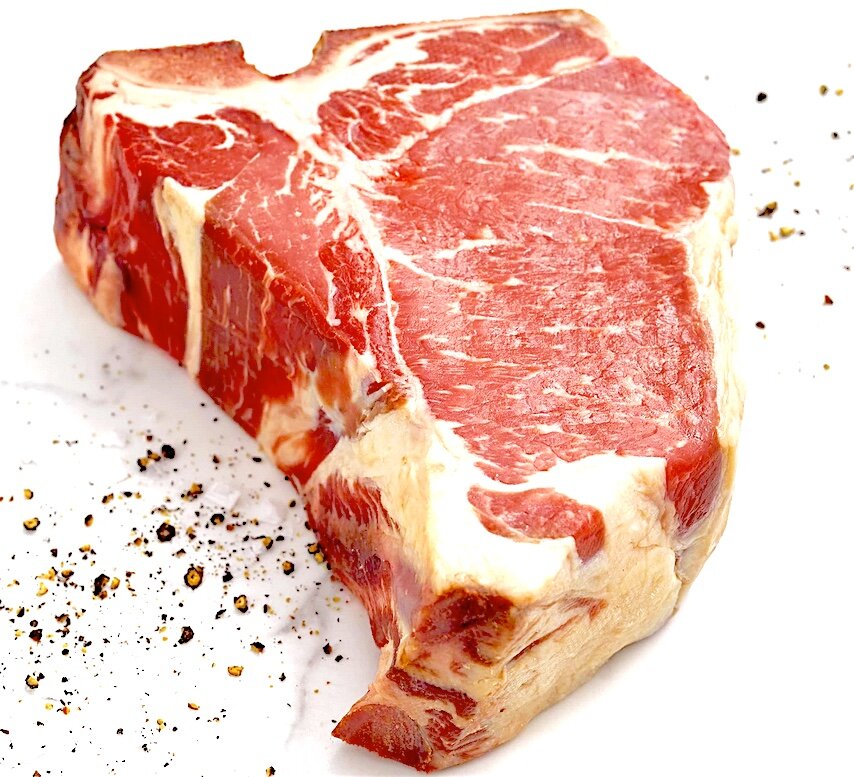
Your meat thermometer is going to be a key factor in determining when the steak is done cooking in the oven, especially in the beginning. For rare, shoot for an internal temperature of 110 degrees; for medium-rare (our favorite!), the internal temperature should be 120 degrees; for medium, the internal temperature should be 130 degrees; for medium-well, the internal temperature should be 140 degrees; and for well-done, well you should be arrested if you would do that to a beautiful piece of meat like this so please DON’T and shoot for a temperature below 140 degrees!!!
So finally, as promised, here are 5 Simple Steps to Mastering the “Reverse Sear” Technique:
1.) Preheat your oven to 300 degrees, the low temperature allows the steak to cook slowly and evenly. We also allow the steak to come to room temperature for about 30 minutes before going in the oven.
2.) To prepare the steak, pat it dry with paper towels to remove any moisture and season it generously on both sides with Kosher salt and freshly ground black pepper. Place the steak on the rack in the sheet pan and slide it into the preheated oven. For the majestic, 3-1/2 lb. Florentine steak, it usually takes about 35-40 minutes to achieve the desired internal temperature. But, depending on the cut of meat you chose (remember, bone-in cuts will take longer), be sure to have your handy meat thermometer on hand to guide you.
3.) In the meantime, prep your cast iron or other heavy skillet by adding a super thin layer of neutral oil (i.e. grapeseed, vegetable) to it and placing it on a burner over high heat.
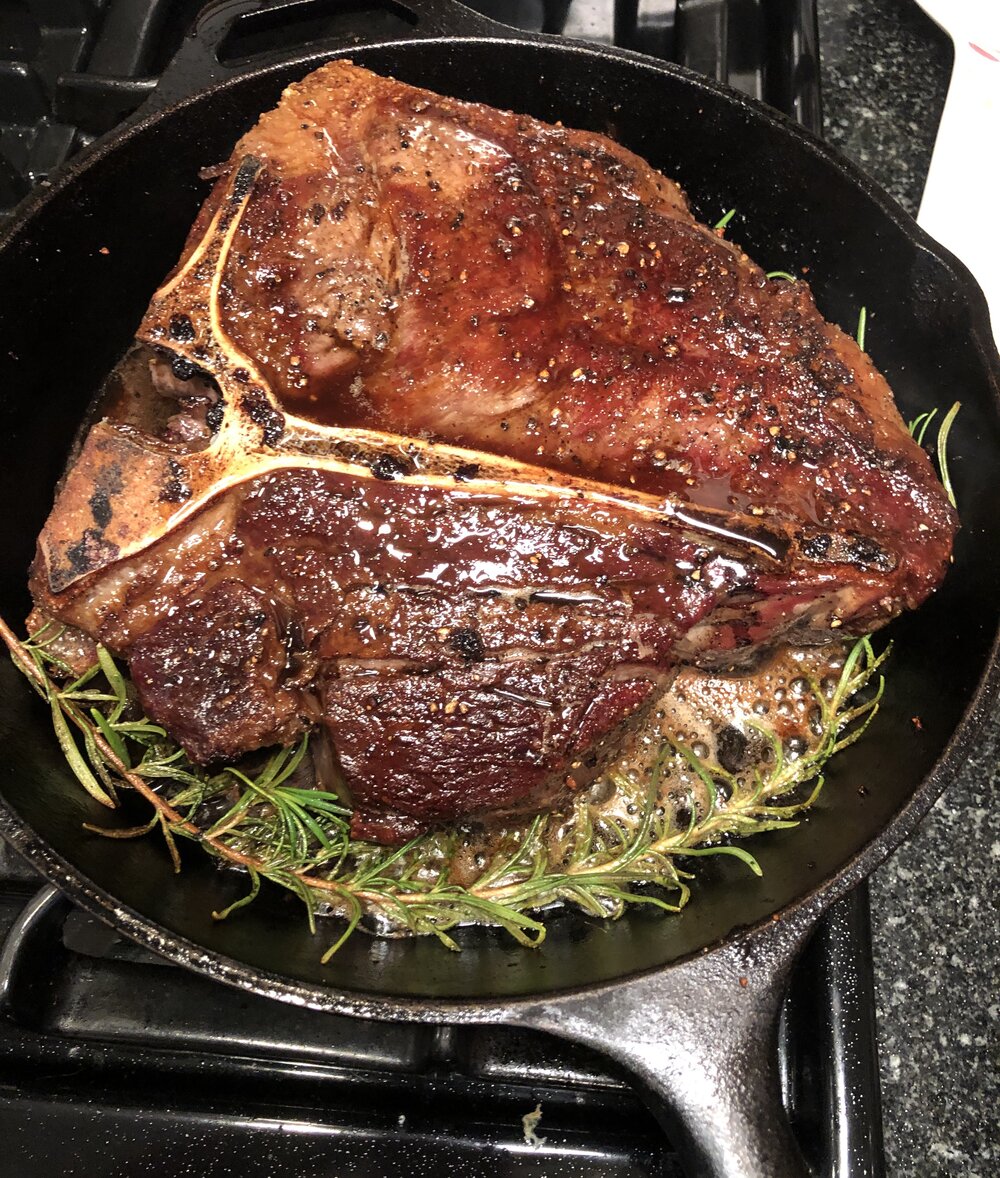
4.) Remove the steak from the oven when it’s cooked to the desired doneness, and transfer it to the screaming hot skillet (it should be smoking, it’s so hot!). Sear it on each side (it won’t take very long!) until it forms a gorgeous, golden brown outer crust, even using your tongs to bring the fat cap and other smaller sides of the meat into contact with the hot skillet - the more color, the more flavor. Once the steak is sufficiently crusted, quickly turn off the burner and remove the skillet from the heat. Immediately add a few Tablespoons of butter to the pan (it will melt instantly) and any desired herbs (we love a couple hearty springs of fresh rosemary) spoon the melted butter over the steak until the meat is coated in the butter.
5.) Remove the steak to a cutting board and allow it to rest for approximately 10-15 minutes once it comes out of the pan. Then slice it up and enjoy!
Print 5 StepsAs for wine to pair with all this meaty deliciousness? This is definitely Cab country, my friend! Yes, Cabernet Sauvignon, the signature red grape of California’s Napa Valley, is the perfect match for steak of this magnitude. It’s full-body, weighty tannins, opulent texture and complex flavors are perfect for meshing with the heavenly heft, fat and flavor of this gorgeous steak.
Some of my favorite California Cabs include the DAOU Paso Robles Cabernet Sauvignon ($25), Round Pond Rutherford Napa Valley Cabernet Sauvignon ($65), Mt. Brave Cabernet Sauvignon from Mt. Veeder ($99), La Jota Howell Mountain Cabernet Sauvignon ($150) and, for a super duper splurge, Harlan Estate’s The Maiden ($275) is an excellent choice. And while you may have seen the Cabernet pairing suggestion coming, you might not expect my next one: Rosé Champagne!

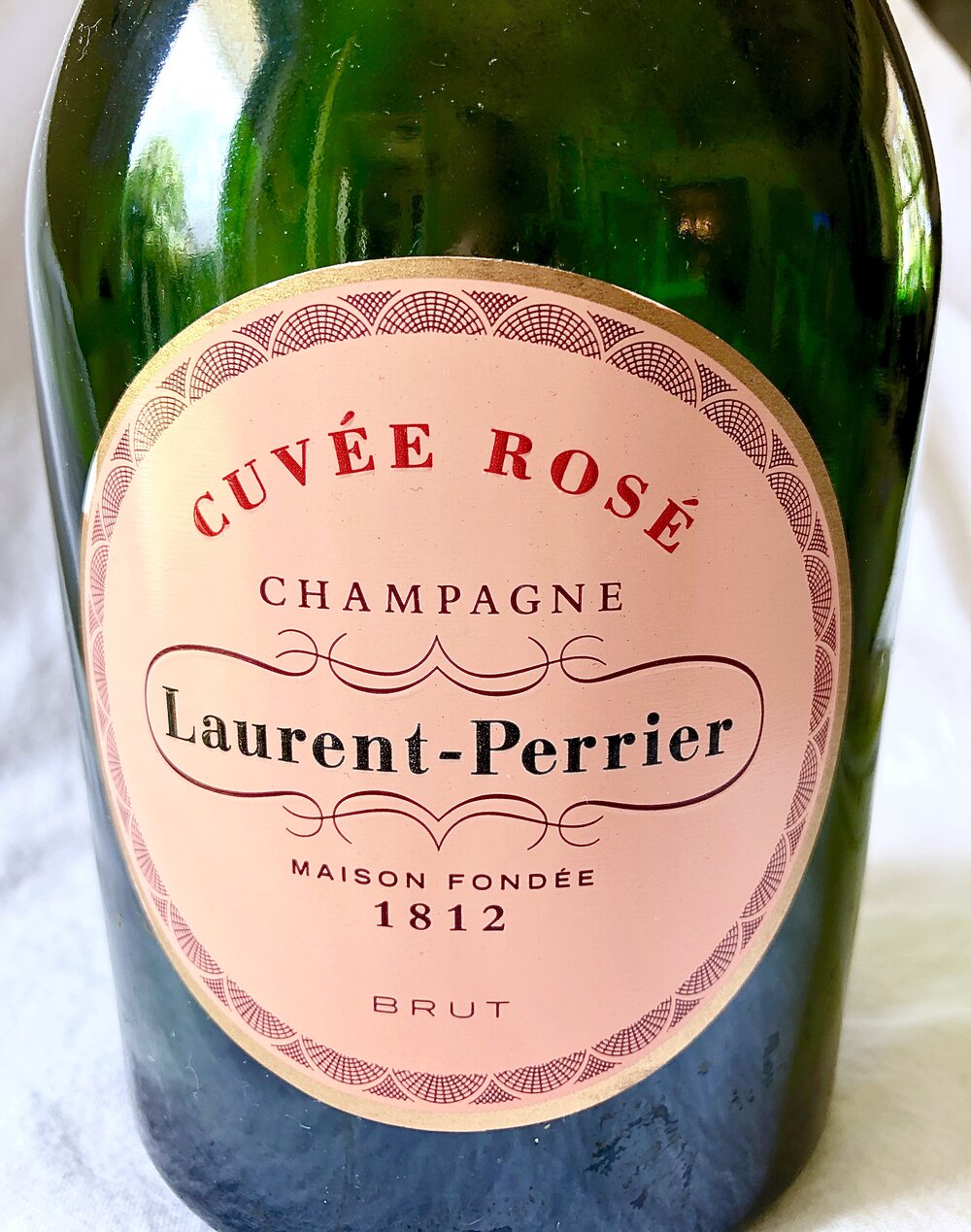
Yes, a Rosé Champagne is actually an excellent wine to pair with steak. In addition to actually containing some still red wine, which is how it gets its rosy hue, the Méthode Traditionelle (how Champagne gets its bubbles) also imparts a richness to sparkling wine that gives it tremendous texture and depth of flavor while it’s exhilarating bubbles essentially take the place of tannins. Some of my favorites include Piper-Heidsieck Rosé Sauvage ($52), Laurent Perrier Cuvée Rosé ($75) and Moët & Chandon Grand Vintage Rosé ($130).
Many thanks to the Hubs for introducing me to the deliciousness that is the “reverse sear” method! It has definitely become our preferred method of preparing steaks and I hope you enjoy it as much as we do xo



Key to learning about wine, sweet wines in particular, is a little term called Residual Sugar which is our Wine Word of the Week. While there are many factors that ultimately determine the perception of sweetness in wine, residual sugar is the actual amount of sugar left in a wine after the alcoholic fermentation - which can end in a variety of interesting ways.
During fermentation, yeast converts sugar into (1) alcohol and (2) carbon dioxide (yeast + sugar = alcohol & CO2). The carbon dioxide gas is generally allowed to dissipate (except in the case of sparkling wine) and the fermentation process is complete when either: (1) the yeast consumes all of the fermentable grape sugars, resulting in a dry wine, (2) the alcohol level becomes too toxic for the yeast and it dies, leaving some residual sugar in the wine; or (3) the winemaker halts the fermentation prematurely. In fortified wines for example, the winemaker halts the fermentation by the addition of a neutral grape spirit which kills the yeast, leaving oodles of residual sugar in the finished wine.
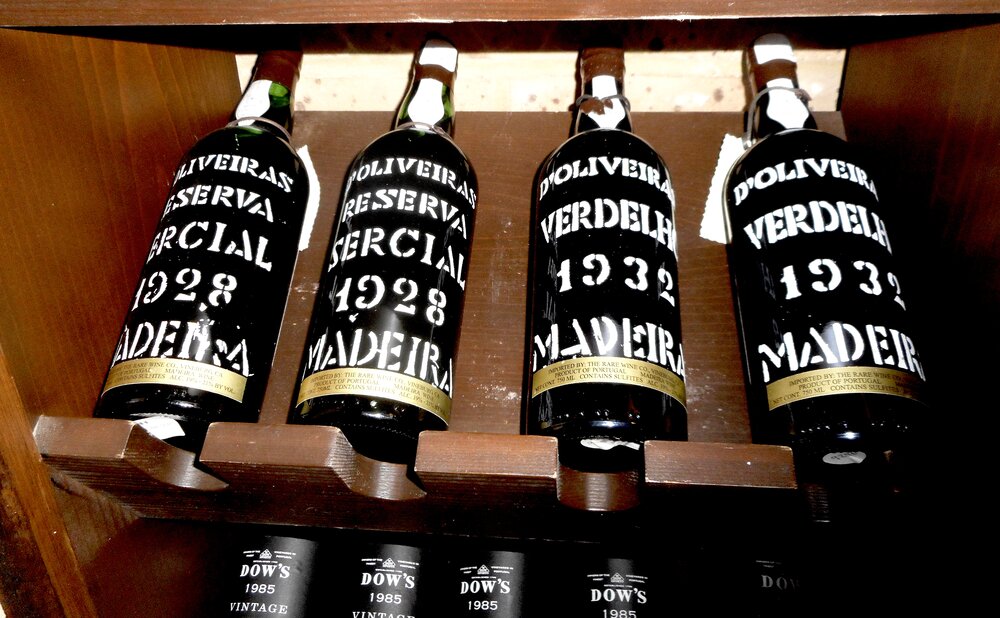
Residual sugar is often measured by either (1) percentage, or (2) grams per liter (aka g/L). Generally speaking, the threshold level for a wine to be considered sweet is around 35-45 g/L, although many sweet wines actually far surpass 150 g/L! And it's not uncommon for dry wines (dry meaning "not sweet") to contain low levels of residual sugar at imperceptible levels (i.e. 10 g/L), since some sugars are unfermentable.
WINE SNOB ALERT: Many Wine Snobs will refer to residual sugar as "RS" especially when they're in the company of someone they are trying to impress or intimidate. They've also been known to snidely ask the uninitiated, "Hmmm, do YOU detect some RS in the wine?" To which you should confidently reply, "Hmmm, I don't know, do YOU?"
Other factors can also affect the perception of sweetness in wine including acidity, tannin and alcohol. Acidity and tannin tend to mitigate the perception of sweetness, while alcohol can actually increase it. Some high acid wines that have high levels of residual sugar, such as Vouvray from the Loire Valley and German Riesling, can be perceived as dry because the sweetness is balanced by the acidity. Such is the case with sparkling wines as well.
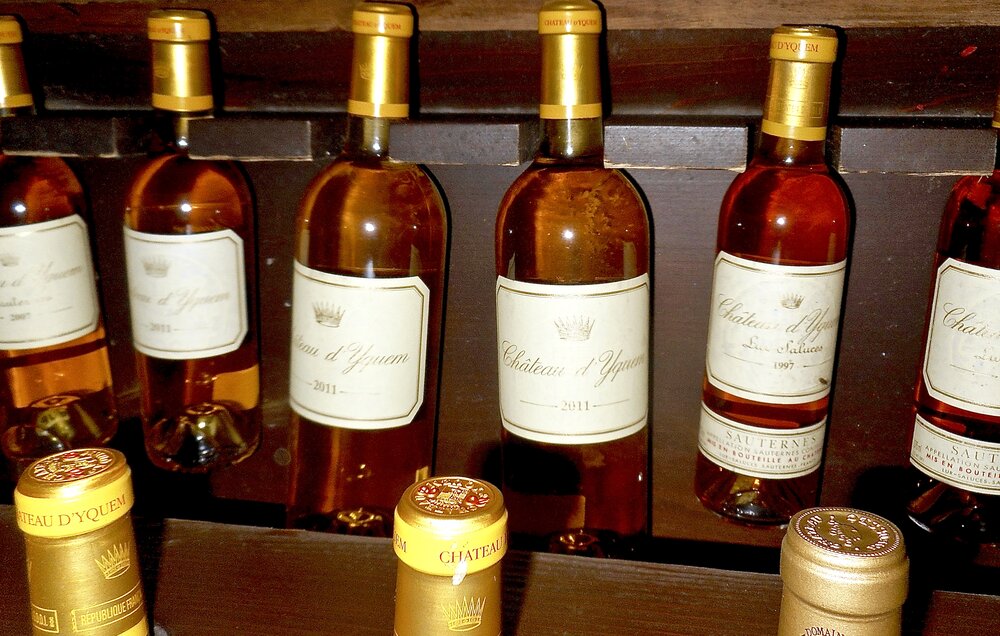
I hope you enjoyed learning about residual sugar, my latest Wine Word of the Week! And if you happen to know any wine lovers who'd like to learn more about wine, please feel free to share this post with them. And if there are any “wine words” you’d like to learn more about, please feel free to share them in the Comments section below and I'll do my best to demystify them for you.
To see previous WWOTW posts, please click here and, as always, thanks for reading!

If you're anything like me, the word "clone" immediately conjures a host of 1970's B-movies featuring body-copying aliens seeking to wreak havoc on the human race. When it comes to grapes, however, that source of many 70's childhood nightmares couldn't be further from the truth. In fact, a GRAPE clone is actually a very good thing!
While most plants reproduce sexually (just picture it, candlelight, a good bottle of wine and Diana Krall's cover of "Peel me a Grape" playing in the background) resulting in a combination of genetic material from both parents, clones are created through asexual propagation, where an actual cutting or graft is taken from only one "mother" vine.
But why not let love run its natural course?
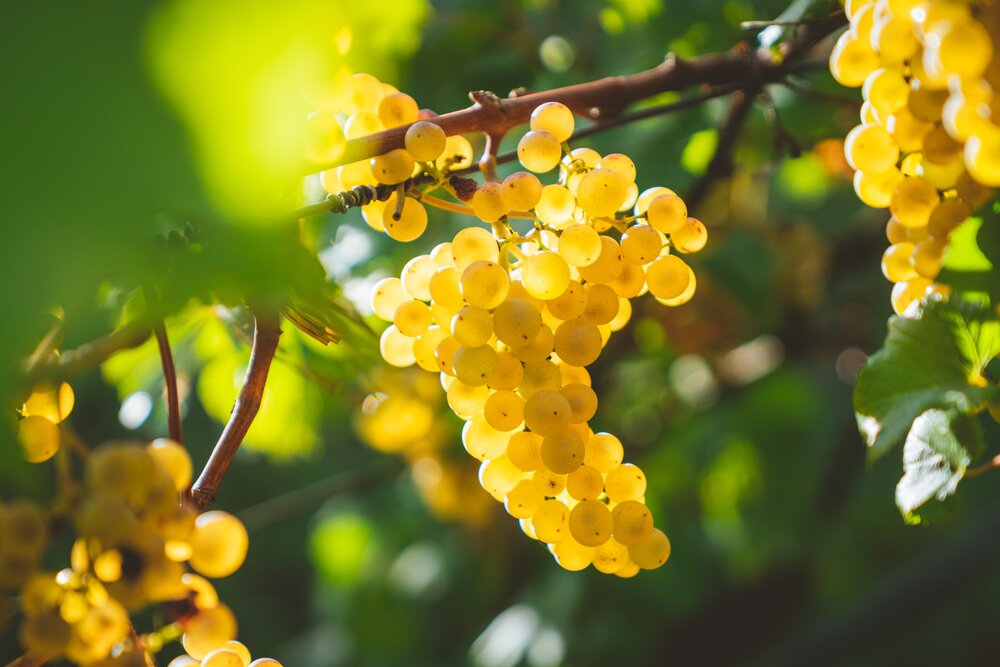
Cloning is done in order to replicate a beneficial trait or desired quality of a particular vine. These traits could include a vine's natural disease resistance, fruit maturation rate, desired berry and/or cluster size, or even a particular flavor or aroma depending on the style of wine a winemaker is aiming for. Theoretically, once this genetically identical cutting is planted, it will result in a vineyard brimming with fruit featuring the desired characteristics of the mother vine, right?
Unfortunately, it's not quite that simple (frownie face).
Slight variations commonly occur among the millions of cells that make up a grapevine. And even though a cutting should be genetically identical to its parent plant, random mutations sometimes occur in the new vine causing it to exhibit different, unexpected characteristics. These differences can be good or bad and if the difference happens to be good, the vine may be further propagated to perpetuate the desired quality. This new, distinctive clone is then assigned an identifier (which can be a number or a name) to distinguish it from other clones of the same grape variety.
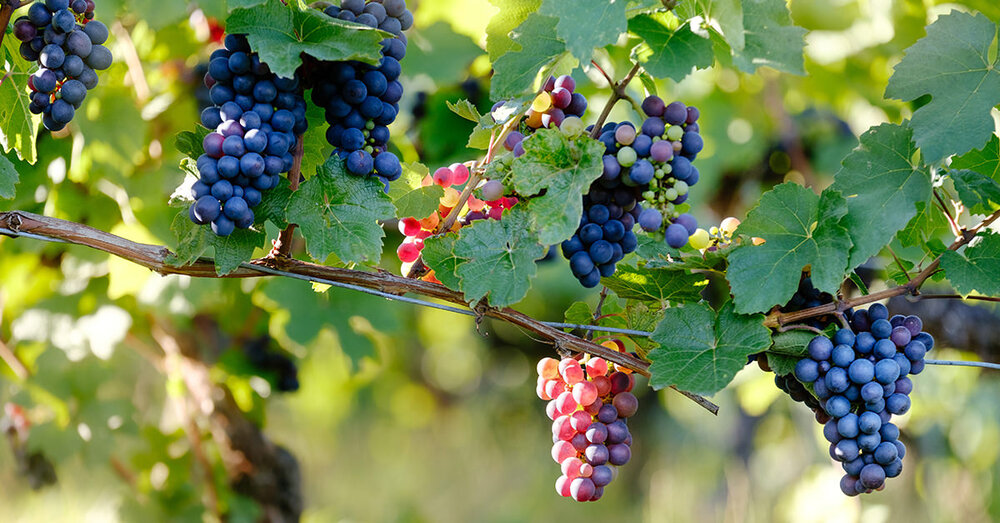
Although talk of grape clones has heretofore occurred mostly among members of the wine trade, viticulture professionals and extreme wine geeks, today it is becoming more mainstream among passionate wine enthusiasts. Know that, generally speaking, the older the grape, the more clones it will probably have, so Old World grapes like Chardonnay and Pinot Noir have quite a few. Some of the more popular "designer clones" you may encounter include Pinot Noir's Pommard, 115 and 777; Cabernet's 6 and 12, and Chardonnay's Old Wente, 4 and 5. For a deep dive on your favorite grape, simply Google the grape name followed by "grape clones" - Chardonnay alone returns 350,000 results!
I hope you enjoyed the latest Wine Word of the Week and if you have any “wine words” you’d like to learn more about, please feel free to share them in the Comments section below.
To see previous WWOTW posts, please click here and, as always, thanks for reading!
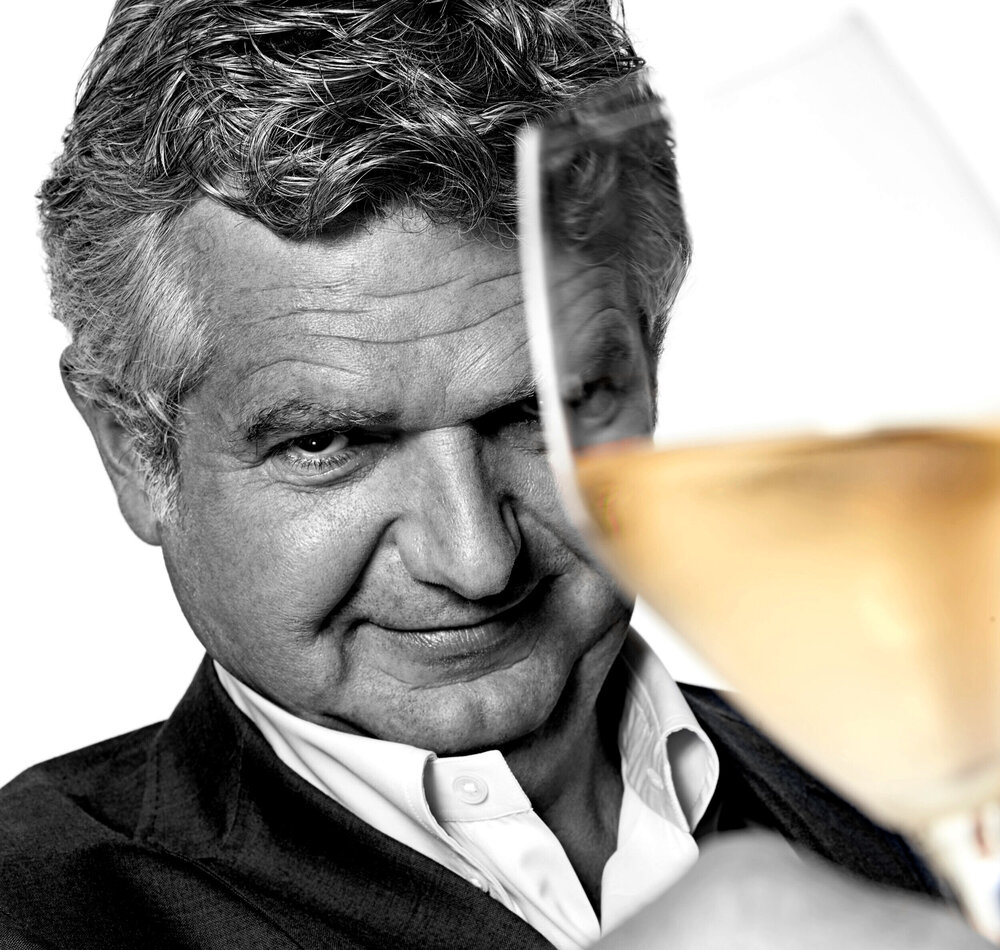
There aren't many wines that can boast the popularity of rosé in recent years. Much like the Duchess of Sussex, this imminently appealing wine seemed to come out of nowhere and take the world by storm. Years later, we STILL can't seem to get enough, and our desire shows no signs of waning anytime soon.
But the truth is, rosé has actually been around for a veeeery long time - like, we're talking Queen Elizabeth long! And since Provence is considered the birthplace of this glorious, dry pink wine - just who HAS been producing rosé all of these years or at least pre-Brad + Angelina?
That timely question brings me to this episode of The Wine Atelier podcast featuring François Matton, Co-owner of Provence's revered Château Minuty. Located a mere 5 minute drive from the Mediterranean coastline on the Saint-Tropez peninsula, this estate has been crafting exceptional, terroir-driven rosé wine for over 80 years.
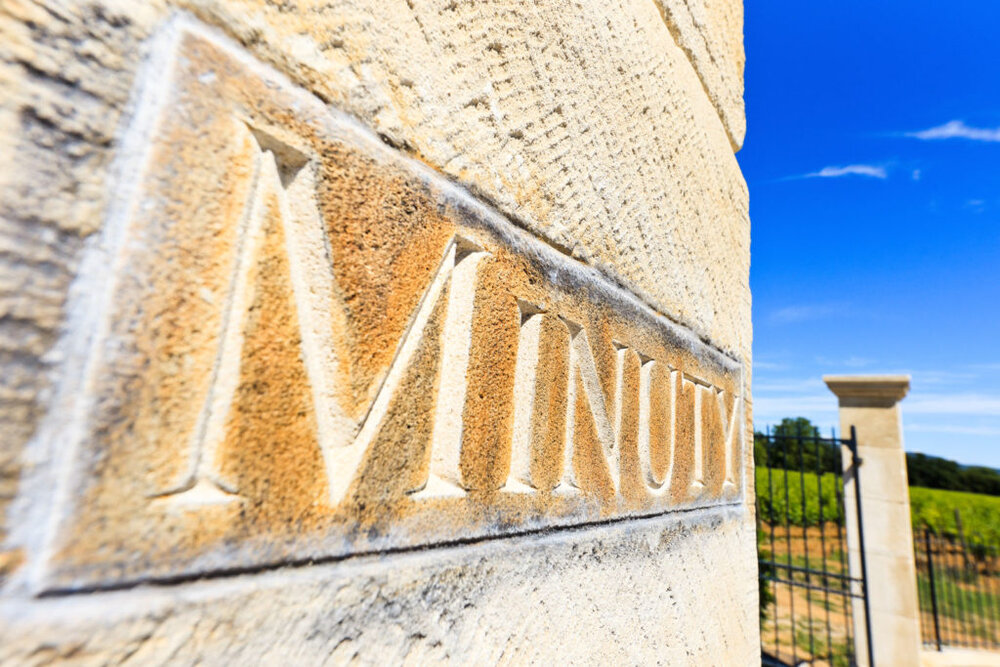
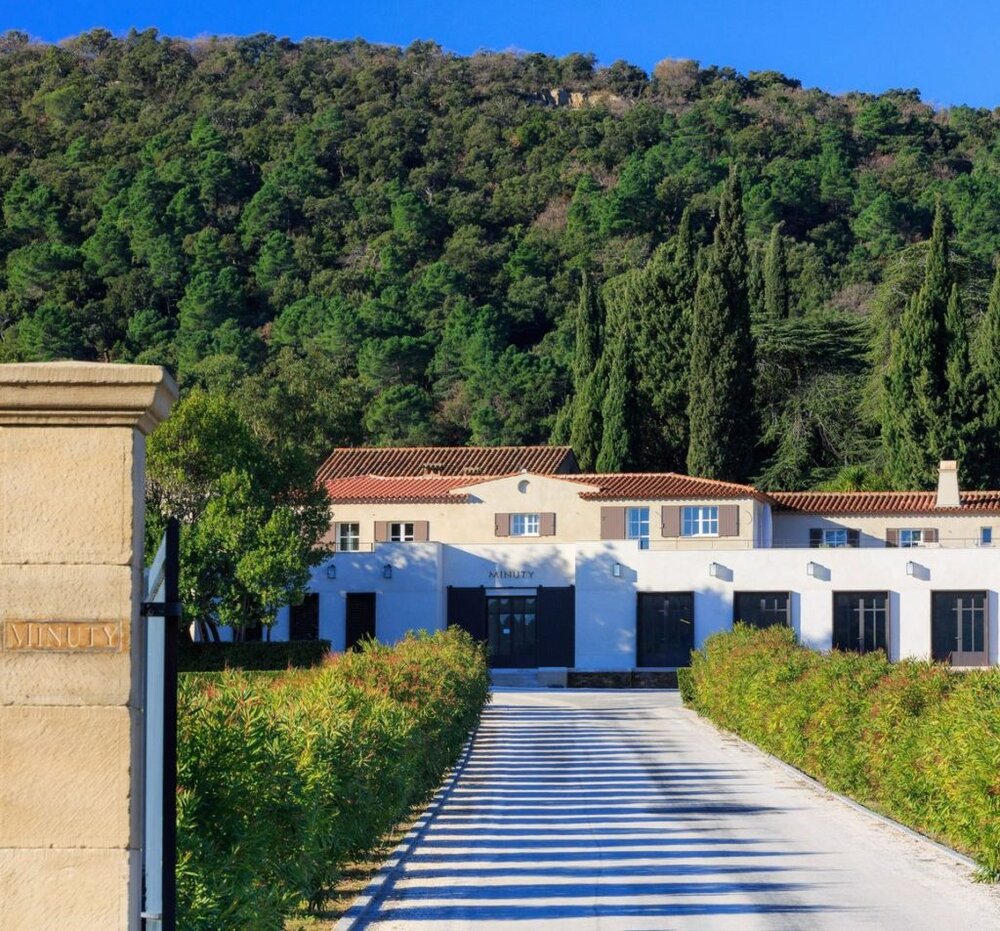
In this interview, the charming François dishes on the history of his family's famed rosés and shares details of his fascinating life growing up in Provence. He also discusses what it's like running the estate with his brother Etienne and the key to creating such consistently wonderful wines. Simply click the slider above to listen to the full episode or click here to listen in iTunes.
1.) Why Château Minuty's rosés are different from newer brands that've emerged over the past decade.
2.) THE single most important grape in making the Château Minuty rosés (and why) and which grapes are NEVER used.
3.) How François almost left the family business and why he ultimately changed his mind.
4.) What it's like running the family winery with his brother and WHO they rely on to settle any disputes.
5.) The fascinating stories behind three of the delicious Château Minuty rosés (M de Minuty, Rosé et Or and Château Minuty 281).
– What is a Grape Clone?
- For more info on the history of the Rosé Revolution, please click here.
– Click here for information on visiting Château Minuty. For help planning your itinerary or booking winery appointments during your travels, please contact Stephanie at Stephanie@theglamorousgourmet.com.
To share your thoughts + spread the word about the The Wine Atelier podcast:
– Please leave me a note in the Comments section below & click here to listen to previous episodes of The Wine Atelier podcast.
– To spread the word about The Wine Atelier podcast, please share this link on social media, in e-mails or anywhere else you like (Thank You in advance!).
– If you enjoyed the show, please click here to go to iTunes and SUBSCRIBE to so you don’t miss a thing – AND – your honest review on iTunes would be greatly appreciated!
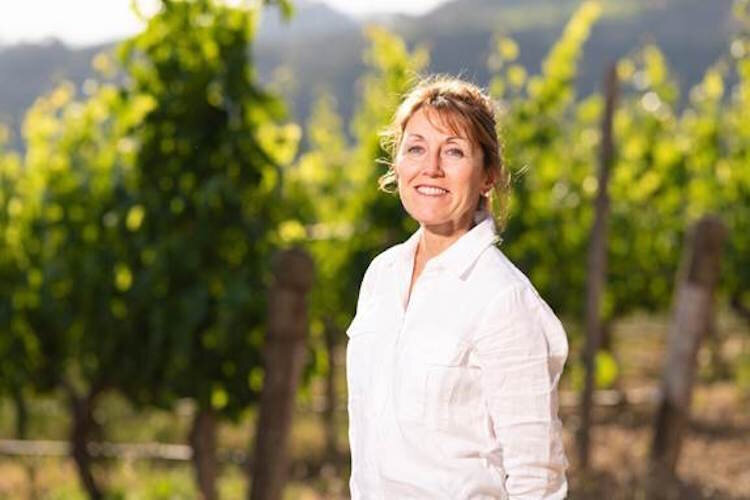
Women in the wine world have made amazing strides in recent decades. Today, they are Sommeliers, winemakers, wine educators and even winery founders and owners and we have many brave and brilliant women to thank who paved the way for us. One of my favorite things about hosting this podcast is highlighting their amazing accomplishments and sharing the secrets of their success with you. Episode #22 of The Wine Atelier podcast features one such woman, vinous trailblazer and dynamo, Delia Viader, Founder and Owner of VIADER Vineyards and Winery.
This Argentine-born, European raised, single mother of four, forged her way into the Napa Valley during the 1980's. To the surprise of many (except herself and those who knew her well), she conquered the formidable slopes of Howell Mountain and established her successful, critically acclaimed winery that thrives to this day. So basically, while I was in college dancing to Madonna, sporting acid wash denim, and drinking more than my fair share of White Zinfandel, Delia was establishing her unique trellising system, pursuing her second doctorate degree, and crafting world class, Cabernet Franc.

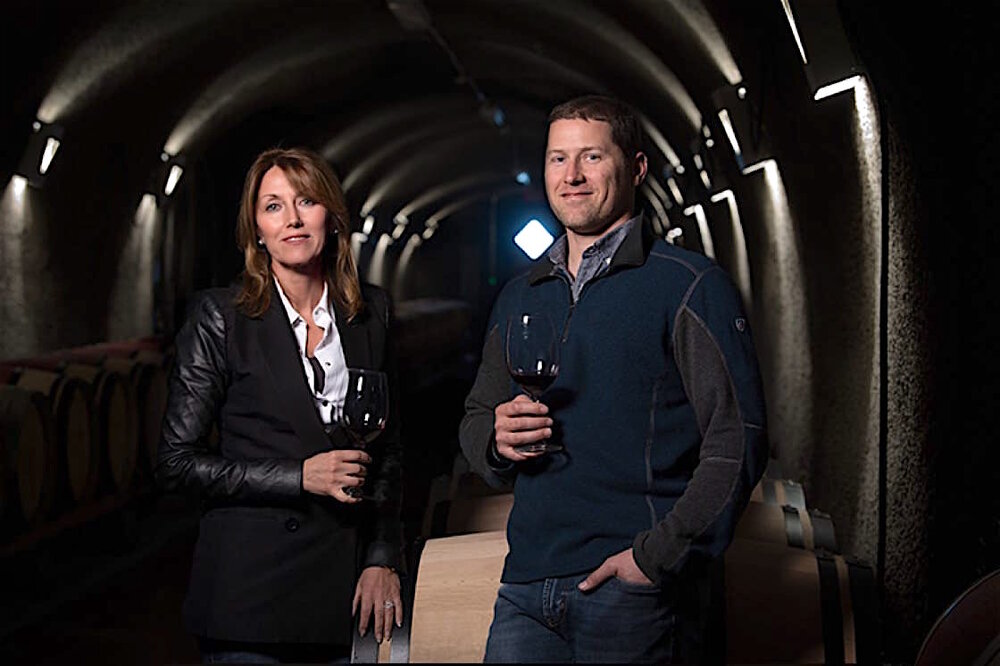
In this fascinating interview, Delia shares her amazing story and how she overcame a variety of obstacles in order to pursue her life's passion, provide for her family and create a lasting legacy. And trust me, her incredible energy and passion for what she does will truly inspire you!
- The serendipitous way this student and Mom (who was born in Argentina and raised in Europe) discovered the special plot of land that was to become her future winery and which family member was intrinsic to her success.
- How she achieved a Master's degree from MIT and TWO doctorate degrees!
- How asking for help and being open to advice from trusted local and international advisors played an important role in her success.- Which delightfully unique grape variety (my personal favorite!) is the main focus of the Viader wines and which grape is conspicuously absent.
- How she acquired her well-deserved nickname, "The Wine Mother." - What it was like raising her children among the vines in Napa and what it's like now working with her son, Alan, Viader's current winemaker.
- How to visit Delia at Viader Vineyards and Winery during your next visit to the Napa Valley.
- The difference between Old World and New World wines
- What the heck is Phylloxera and why it's so devastating to grapevines.
- More info on what makes mountain fruit so special.
- Learn about legendary Bordeaux-based winemaker and consultant, Michel Rolland.
To share your thoughts + spread the word about the The Wine Atelier podcast:
– Please leave me a note in the Comments section below & click here to listen to previous episodes of The Wine Atelier podcast.
– To spread the word about The Wine Atelier podcast, please share this link on social media, in e-mails or anywhere else you like (Thank You in advance!).
– If you enjoyed the show, please click here to go to iTunes and SUBSCRIBE to so you don’t miss a thing – AND – your honest review on iTunes would be greatly appreciated!

As an Art History Major and wine lover, when I heard that Napa's FIRST Wine History Museum and Tasting Salon was opening this month I couldn't wait to find out more! I immediately reached out to its founder, wine industry icon and proprietor of The Boisset Collection, Jean-Charles Boisset and am thrilled to be able to share this interview with you.
While the Napa Valley is relatively new when compared to Old World wine regions, it's illustrious, colorful and undeniably fruitful 200 year history definitely deserves a fitting homage. Hence, the creation of 1881 Napa, the official name of the establishment which opens to the public later this month. And who better to helm this historic endeavor than enduring Napa champion, Jean-Charles Boisset.
Jean-Charles' flamboyant joie de vivre and passion for the Napa Valley make him perfect for the project. His excitement is readily apparent in our interview, and if you aren't already familiar with the charming Jean-Charles, you'll definitely want to learn more about his fascinating and multi-faceted life and career.
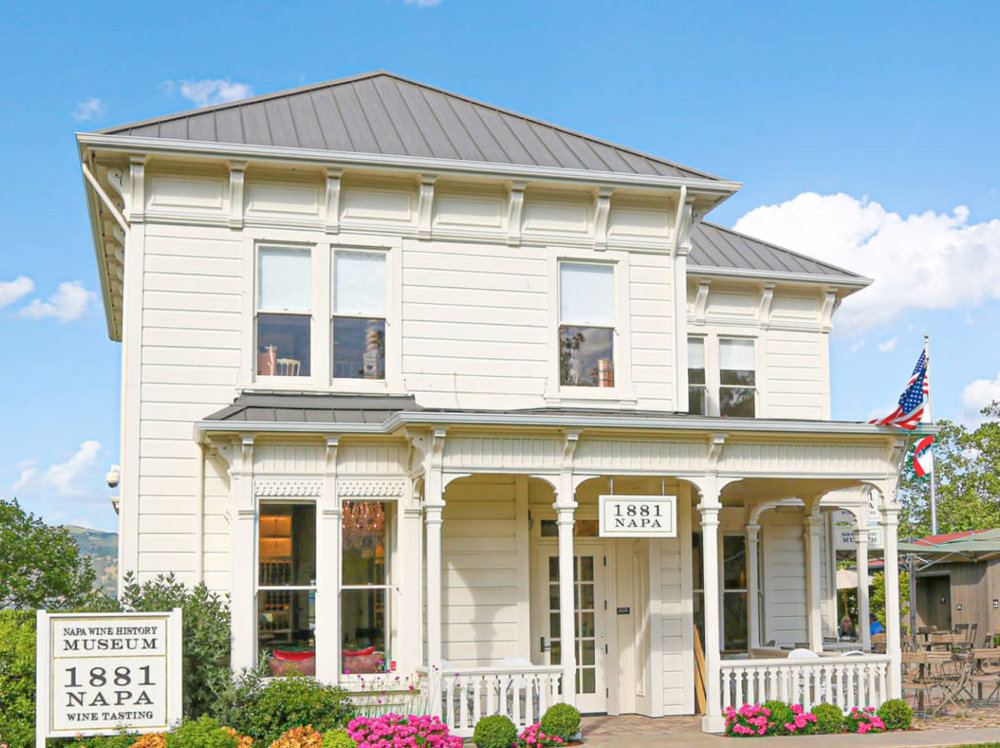
- How he was able to establish 1881 Napa on one of the Napa Valley's most historic properties.
- The legendary names he partnered up with to help realize his vision for 1881 Napa.
- The delightfully informative tasting experiences available to visitors as well as how to best plan your visit.
- All the deets on his exciting vinous partnership with singer, John Legend.
- How you can meet Jean-Charles on his upcoming book tour.
- His exciting plans for his 10th wedding anniversary with wife, Gina Gallo.
– Learn more about visiting 1881 Napa, Napa's first Wine History Museum and Tasting Salon, by clicking here.
– Learn more about Jean-Charles Boisset, Boisset Collection and his current projects and book tour by clicking here.
– Learn more about LVE wines, Jean-Charles partnership with John Legend, and their new Summer rosé by clicking here.
To share your thoughts + spread the word about the The Wine Atelier podcast:
– Please leave me a note in the Comments section below & click here to listen to previous episodes of The Wine Atelier podcast.
– To spread the word about The Wine Atelier podcast, please share this link on social media, in e-mails or anywhere else you like (Thank You in advance!).
– If you enjoyed the show, please click here to go to iTunes and SUBSCRIBE to so you don’t miss a thing – AND – your honest review on iTunes would be greatly appreciated!
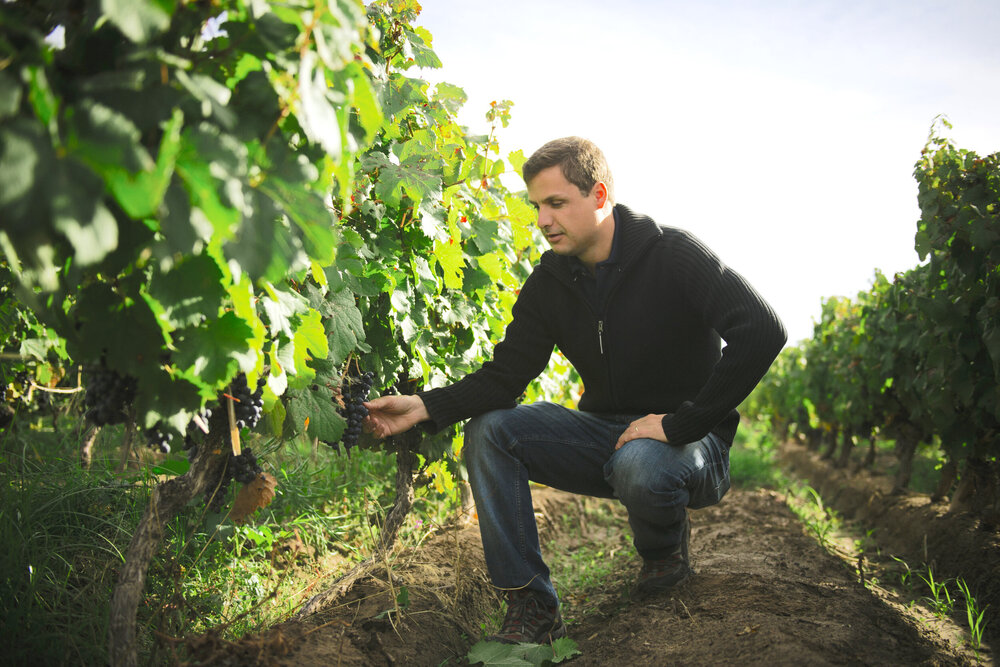
I've always been fascinated by Chile as a wine region. So on this Memorial Day weekend, I'm thrilled to share my podcast interview with a member of the "First Family" of Chilean wine and Chief Winemaker of the iconic Viña Montes, Aurelio Montes, Jr.
Aurelio's father is a pioneer of Chilean wine who relentlessly pursued his vision of producing wines of superior quality to the ones being produced in Chile at that time. The result of his labor was ViñaMontes, the first Chilean winery to produce and export Premium and Ultra Premium wines including their acclaimed Montes Alpha Cabernet Sauvignon and Montes Alpha M.
Although Aurelio, Jr. was born into the wine world, his story is anything but straightforward. Rather than automatically assuming the reigns of the family winery as one might expect, he took a circuitous and quite fascinating route to his current position as Montes' Chief Winemaker. During his vinous odyssey he gained valuable experience in both life and wine, essentially earning his way into his family's iconic winery in the process.
In this interview, Aurelio shares the details of his whirlwind journey through the vineyards of Australia, Napa and France and reveals the inherent and sometimes challenging intricacies involved in working with his legendary father.
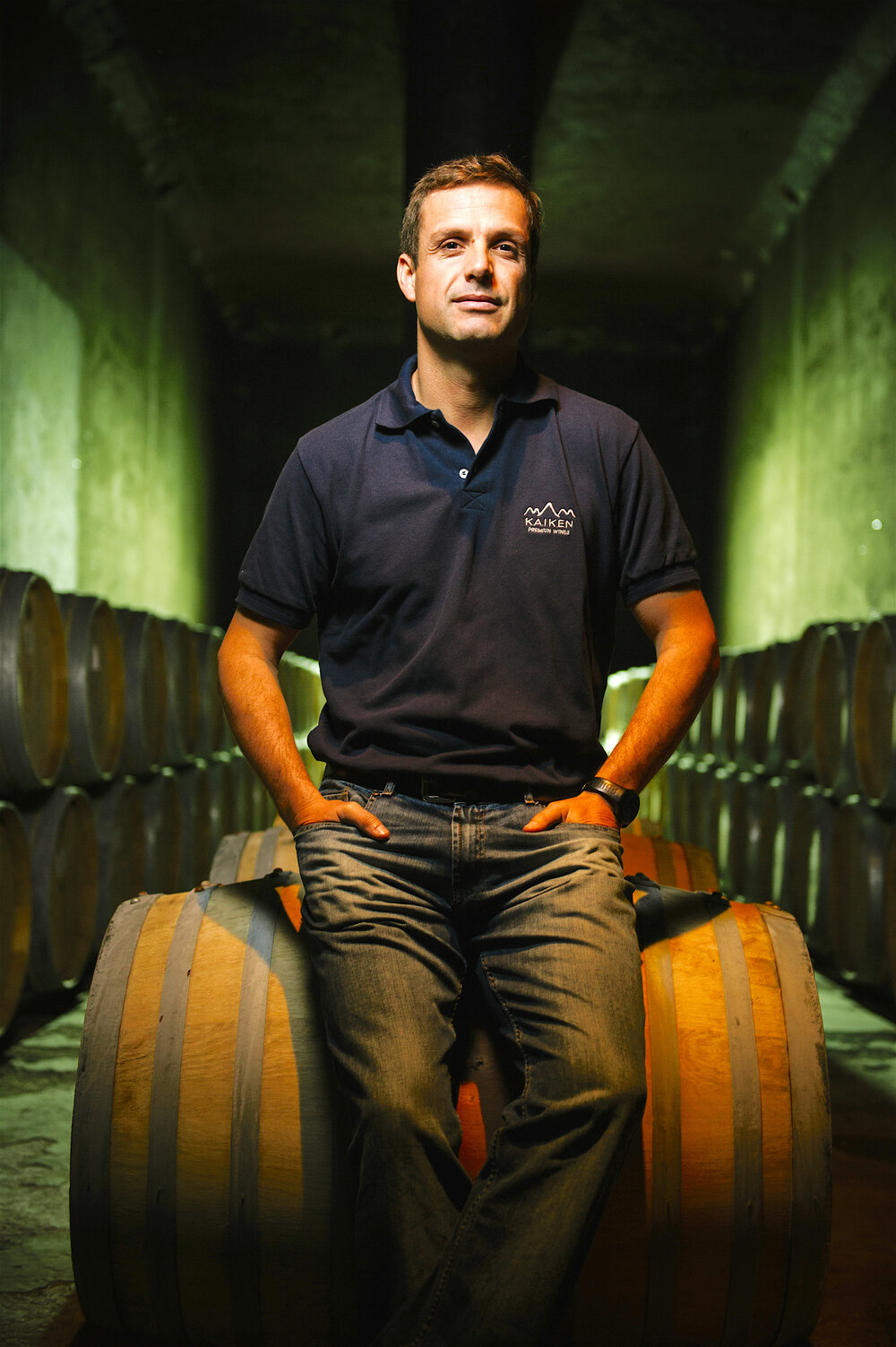
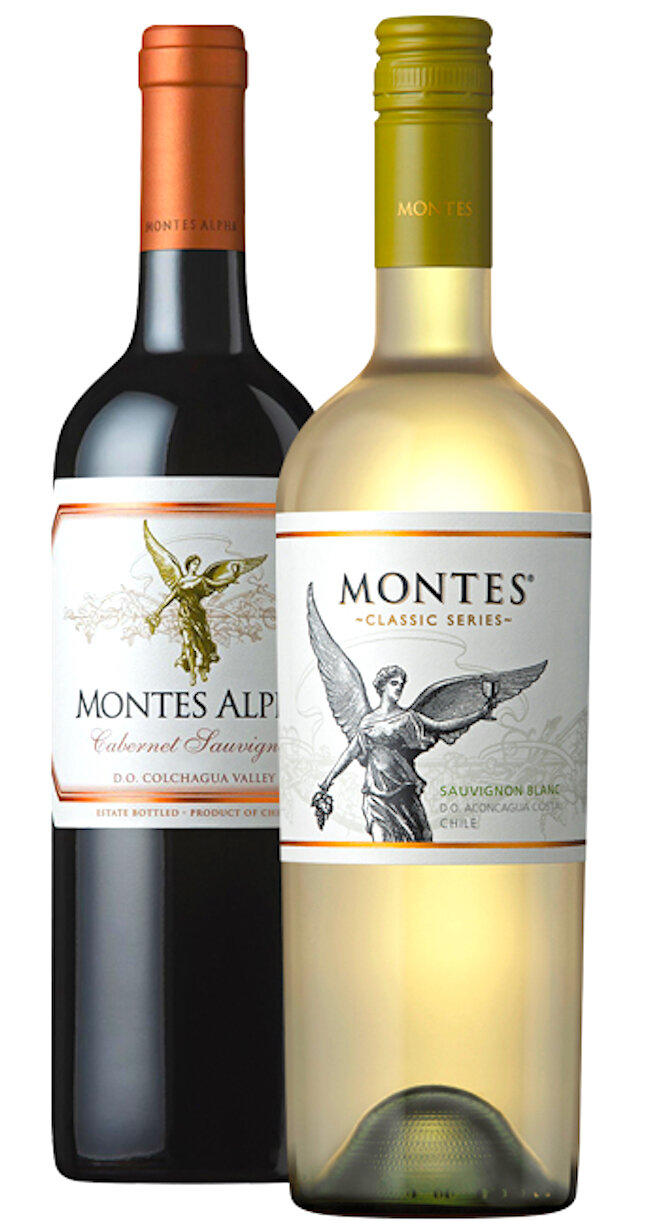
Aurelio also shares a fascinating behind the scenes look at his approach to winemaking and rationale behind key decisions including the importance of sustainable farming over the long term, and why becoming a "partner with the vine" is so important for producing excellent wine. He also does a deep dive into some of Montes' best known wines, discussing their nuances in great detail from the importance of their estate vineyards and the trials and tribulations of working with Chile's signature red grape, Carmenere.
I think you'll come away from this interview truly inspired by Aurelio's passion for winemaking and his attention to every detail that goes into making it. This includes his rationale for implementing the Chinese art of feng shui and playing Scottish Gregorian chants for the wine in order to achieve the best wine possible!
Many thanks to the charming Aurelio Montes, Jr. for taking the time to chat with me! To listen to this interview, simply click the "PLAY" on the slider above OR click here to listen in iTunes. Please stay tuned for more interviews with the world's most interesting people in food and wine!
- Learn more about the infamous phylloxera epidemic that ravaged the vineyards of Europe in the late 1800's by clicking here.
- Learn about the importance of stainless steel fermentation and fermenting "on the lees" by clicking here.
- For more details about white wine production, check out my post White Wine 101, please click here.
- For more details about red wine production, check out my post Red Wine 101, please click here.
To share your thoughts + spread the word about the The Wine Atelier podcast:
– Please leave me a note in the Comments section below & click here to listen to previous episodes of The Wine Atelier podcast.
– To spread the word about The Wine Atelier podcast, please share this link on social media, in e-mails or anywhere else you like (Thank You in advance!).
– If you enjoyed the show, please click here to go to iTunes and SUBSCRIBE to so you don’t miss a thing – AND – your honest review on iTunes would be greatly appreciated!